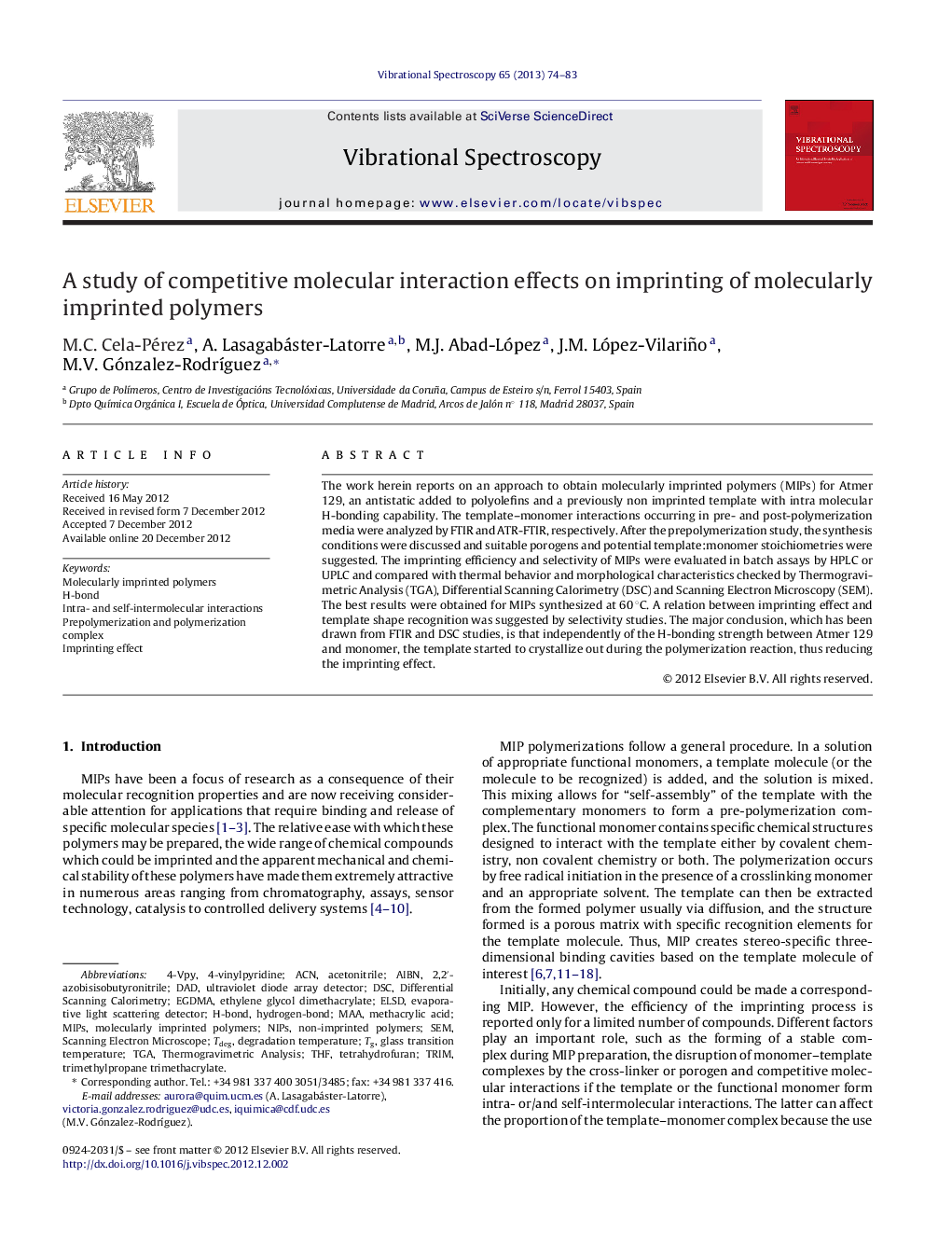| Article ID | Journal | Published Year | Pages | File Type |
|---|---|---|---|---|
| 1251896 | Vibrational Spectroscopy | 2013 | 10 Pages |
The work herein reports on an approach to obtain molecularly imprinted polymers (MIPs) for Atmer 129, an antistatic added to polyolefins and a previously non imprinted template with intra molecular H-bonding capability. The template–monomer interactions occurring in pre- and post-polymerization media were analyzed by FTIR and ATR-FTIR, respectively. After the prepolymerization study, the synthesis conditions were discussed and suitable porogens and potential template:monomer stoichiometries were suggested. The imprinting efficiency and selectivity of MIPs were evaluated in batch assays by HPLC or UPLC and compared with thermal behavior and morphological characteristics checked by Thermogravimetric Analysis (TGA), Differential Scanning Calorimetry (DSC) and Scanning Electron Microscopy (SEM). The best results were obtained for MIPs synthesized at 60 °C. A relation between imprinting effect and template shape recognition was suggested by selectivity studies. The major conclusion, which has been drawn from FTIR and DSC studies, is that independently of the H-bonding strength between Atmer 129 and monomer, the template started to crystallize out during the polymerization reaction, thus reducing the imprinting effect.
► A study of inter- and intra-molecular interactions in pre- and post-polymerization complex was carried out by FTIR. ► A MIP was developed for a previously nonimprinted target, Atmer 129. ► Atmer 129 is able to form intra- and self-intermolecular H-bonding interactions. ► Atmer 129 started to crystallize out during the polymerization reaction. ► Selectivity results suggested that imprinting could be ascribed to shape recognition.
